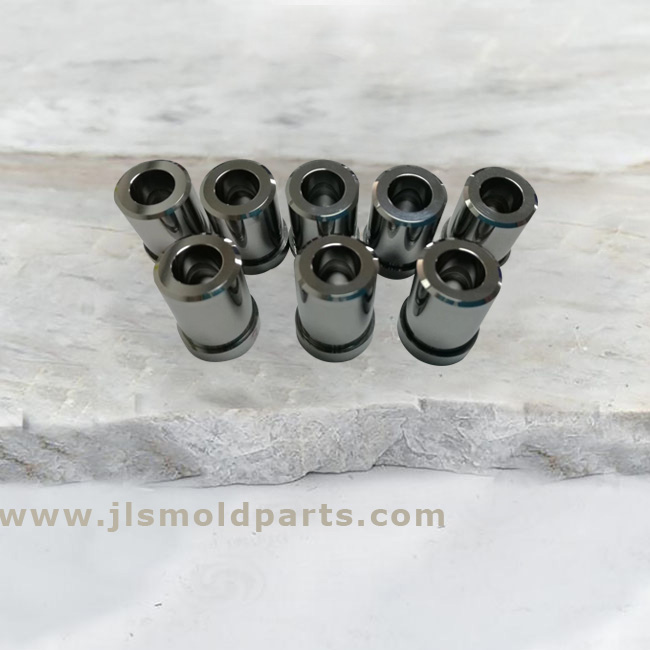
Tungsten carbide dies are mainly used for stamping and stretching. Carbide is widely used as a tool material, such as turning tools, milling cutters, planers, drills, boring tools, etc., for cutting cast iron, nonferrous metals, plastics, chemical fiber, graphite, glass, stone and ordinary steel, can also be used for cutting Hard-to-machine materials such as heat-resistant steel, stainless steel, high manganese steel, and tool steel. The cutting speed of new cemented carbide tools is now several hundred times that of carbon steel.
The main function of the cemented carbide die (bushing) is that the bushing is a kind of component that protects the equipment. The die can effectively reduce the wear between the punch or the bearing and the equipment, and achieve a guiding effect. In terms of stamping dies, tungsten carbide bushings are widely used because of their wear resistance, good finish, and no need to change frequently, thus achieving higher utilization rates of equipment and personnel.
Cemented carbide bushings can also be used in stretching, mainly the stretching of some copper parts and stainless steel parts. In these circumstances, the frequency of usage is too high and it’s easy to generate heat and wear to the dies, so that the punch moves, resulting in dimensional error and poor appearance of the products.
With the increase of oil extraction, the oil on the shallow surface is reduced. In order to ensure the use of oil, people gradually develop into large deep wells and high-angle wells. However, the difficulty of oil extraction is gradually increasing, the components of oil extraction are required with good abrasion resistance, corrosion resistance or impact resistance.
As a wear-resistant part in petroleum machinery, cemented carbide bushings have high hardness, good wear resistance and high smooth finish. They have been widely used in modern society, satisfying the needs of daily use and special performance. Some companies use spraying to improve the durability and service life of cemented carbide bushings.
After spraying, the hardness of the carbide bushing can reach HRC60, and the wear resistance is better, which can meet the requirements of the petroleum machinery industry. However, the cemented carbide bushing after spraying needs turning to ensure meeting the accuracy requirements of drawings.
At present, cutting tool materials include carbide, ceramic and cubic boron nitride. Carbide cutting tools can be excluded from the hardness of cemented carbide bushings. Although ceramic tools are suitable for machining high hardness work pieces, they are only suitable for small finishing operations. Therefore, the material that is most suitable for machining cemented carbide bushings is CBN (cubic boron nitride).
Processing of Tungsten Carbide Dies
CNC precision angle and bore grinder, NC angle and bore grinder, precision surface grinder, precision internal and external cylindrical grinder, centerless grinder. The inner hole is ground and polished to a specular surface.





